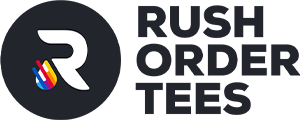Does Size Matter? Learn These 9 Printing Terms To Help You Place The Perfect Order

November 14, 2022

DESIGN

Does Size Matter? Learn These 9 Printing Terms To Help You Place The Perfect Order

November 14, 2022
We’ll get to size in a minute. As the term relates to a print, of course.
First, have you ever called a company and spoke to someone about their services and had to ask yourself “What the heck are they talking about?” Understanding the terminology is important, especially in the custom apparel business when some of the terms are used interchangeably.
And that’s fine– as long as everyone knows what they’re talking about.
In this post, I’ll give you some quick and easy definitions to explain nine commonly used terms to do with size and placement that our awesome team uses on a daily basis here at RushOrderTees. Understanding these terms will help you decide what you want, and how to ask for it when you order.
1. Location
This refers to the broad category of a named location. When you place an order, location will be the first decision in regards to printing. There can be one or multiple locations; however, fewer print locations will save money. Once location is determined, the specific placement and the exact print area where the design will go comes into play, both of which are within the location.
To complicate things a bit, people often say print area when they mean print location. My intention here is to differentiate the two. Because someone has to. If I can’t clarify these terms by the end of this post, I’m not doing my job.
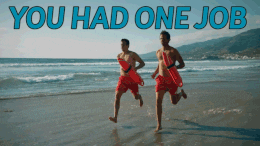
Example use:
“The image is too detailed for a left chest print, so the customer will need to decide on a different print location.”
Full Front, Upper Back, and Sleeve are examples of print locations. Something to be aware of when you’re deciding on print methods: screen printing allows for many more print locations– and unique locations– than DTG (direct-to-garment digital printing).
I’ll be writing a more in-depth article about print locations, both standard and alternative, so look for that soon.
2. Placement
This is a measurement or formula that determines the exact placement of the print. In other words, it’s where– exactly– to put the print. Often this will rely on an anchor point (more on that coming up).
How does it relate to location again? A print location can have various placement options, which could change based on garment size and style, or by customer preference. And again, screen printing allows for more variations of placement than DTG.
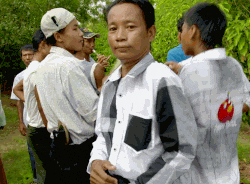
There’s a particular formula used to determine all of the standard placements, so if you want anything different, you will need to specify what that would be. As long as your request is not physically impossible, we’ll take care of you.
Example use:“The customer has requested to make the print placement approximately 1” down from the collar.”
3. Print Area
Technically, it’s the dimensions of the surface area on the garment where the design will get printed and is determined by the placement and the shape of the design itself. The print area might not take up the entire location. Therefore, a location has a print area– but not vice versa.
Make sense?
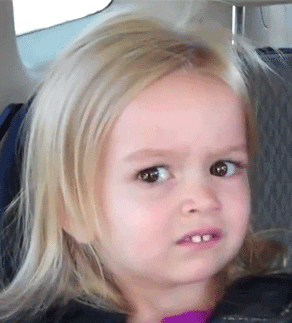
Yeah, it’s a little confusing. That’s why I wrote a whole post to explain it. But don’t worry– you’re not expected to know all this stuff just to place an order. This is about clearing up the differences. For the record.
All too often in this industry, the last three terms I just outlined are conflated with each other, or used interchangeably, even by seasoned professionals. There’s no reason why we can’t all settle on the definitions.
To help clarify, this example usage is all three terms in their proper context:
“There’s a seam running through the print area, so we will need to adjust the placement, or decide on a new print location.”
Print area can come up as an issue when you’re requesting an alternative, such as a side print. But don’t let that stop you from being creative with your location choices. Our Project Specialists will guide you through the process of choosing the appropriate garments and print methods to make your vision a reality.
4. Anchor Point
The anchor point is the starting point for setting the placement of the print across variously sized garments. It can be the center, top, bottom, side, or a corner of the design.
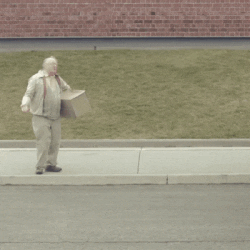
For a printer, the anchor point is especially important to know. For a customer, it’s kind of ‘pro tip’ information.
But here’s the thing: if you have a wide range of sizes and you feel the print will look different across the range, you may want to consider identifying an anchor point that will determine the placement for each size.
Example use:“The anchor point for a left chest print is the top corner of the design positioned 3 inches down from the collar and 2 inches from the center of the chest.”
5. Print Size
Now we get into sizing for the rest of the terms in this post. And to answer the question in the title: YES, size matters. At least when it comes to T-shirt design. When we talk about size, we’re talking about the exact measurement of the print, in height and width.
Why does it matter? To be blunt, the print size can make or break a design. A print can look too big (often) or too small (not as often). Some of it has to do with the shape of the design, other factors include colors and visual impact.
Keep in mind that print size is totally independent of the garment size, so whatever print size you choose will have to work on all of your items to be printed. If you have a wide range of sizes, the print could look significantly different on the far ends of the range (large on the smaller garments, small on the larger garments).
Example use:“One of the most common changes requested to the Art Department is to increase or decrease the print size.”
Consider your print size carefully. Your decision will determine the print area and could affect the placement or even change the location.
6. Standard
Standard simply means the most common, and the default setting– if no alternative is specified. This can refer to print location, placement, size, and more. It’s always good to know what the standards are. Just ask us!
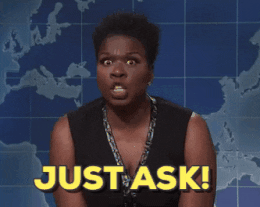
Seriously- if you have any questions, give us a call or jump into chat. We’re more than happy to help. Do you know what the standard sizes are? They might be larger or smaller than you think, and placement might not be exactly what you want.
For example, the standard full front size is too large for my taste. But everyone is different– it’s best to check your assumptions at the door and ask.
Example use:“The customer is inquiring if our standard placement is too low.”
7. Oversize
Anything over standard size, up to and until the maximum size. Got it? So it’s bigger than standard, smaller than maximum. Get specific with your request. If the standard width is 12″ and the maximum is 14″, do you want it to be 12.5″ wide or 13.5″ wide? Sometimes an inch can make a big difference.
Example use:“This oversize print can only work on your adult sizes.”
Certain designs lend themselves much better to oversize prints than others. For example, designs that are taller than they are wider. In future posts, I will get into more about the types of designs that work better oversized.
8. Maximum
Taking it to the max: it’s the largest size we can possibly print for a particular print area, and it’s going to vary based on garment sizes and different print techniques. Once again, DTG has more limitations as far as print size range than traditional screen printing.
If you’re going for maximum, make sure your design fits on all your garment sizes. You may want to adjust the design itself to eliminate any unneeded space or protruding elements. Crop the photo, reduce the text size, etc.
Example use:“The maximum print size for your youth garments is 12 inches tall.”
If your design is not going to fit correctly or has any issues, the Art Department will let you know, or they will resize it for you– so check that proof carefully when you get it, and pay special attention to the size shown.
We always show you the exact print size on your proof mock-up. So read your notes!
9. Platen / Pallet / Board
Three different names that all mean the same thing. It’s the part of the print machine that the garment is fitted onto, providing an underlying surface for printing. The size of these boards can set the limitations of size for print areas and can prevent us from printing certain unique locations or “all over” prints.
This comes into play when you’re doing sleeve prints, pocket prints, tote bags, toddler garments, and other less common prints. You don’t need to think about this– we’ll let you know if there are any issues with your request.
Example use:“The maximum width of a sleeve print is 3.5” because the platen is only 4 inches wide.”
Now let’s look at these terms in a graphic:
There you have it. I hope I have cleared things up, or at least given you a refresher on these terms. Now you’ll be able to tell us exactly what you’re going for, and our team will be super impressed when you contact us.
If you still have questions, feel free to ask “what the heck are you talking about?” We’re always here to guide you through the process, every step of the way, and help you create beautifully printed items for your brand or event.
I hope I’ve done my job here, and you’re ready to place the perfect order.
Happy designing!-M

Imri Merritt
About the Author
A graduate of the Multimedia program at the University of the Arts in Philadelphia, Imri Merritt is an industry veteran with over 20 years of graphic design and color separations experience in the screen printing industry.
